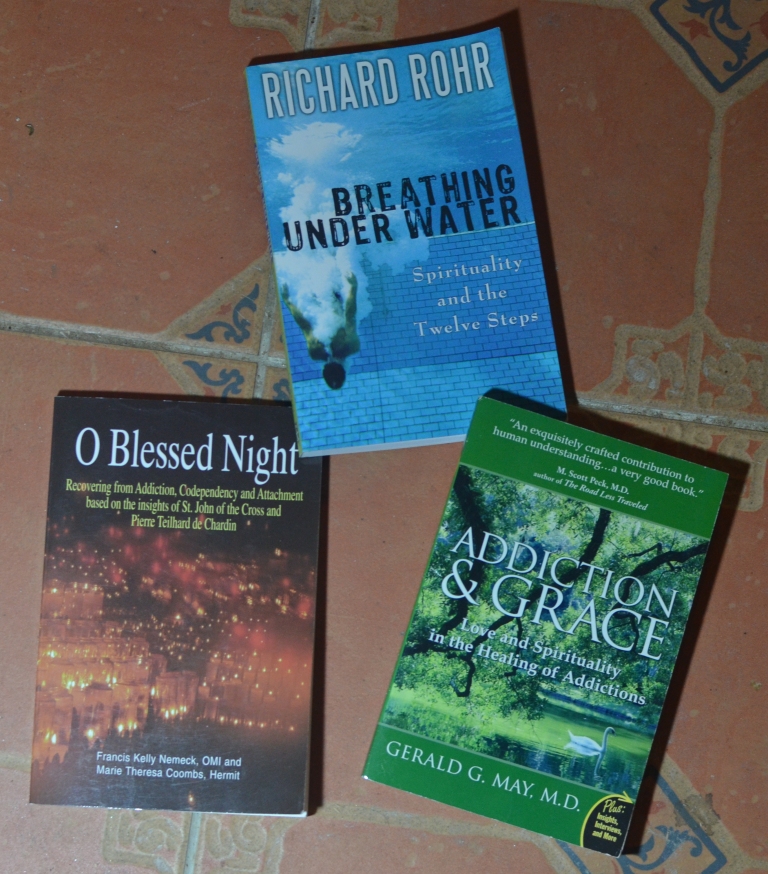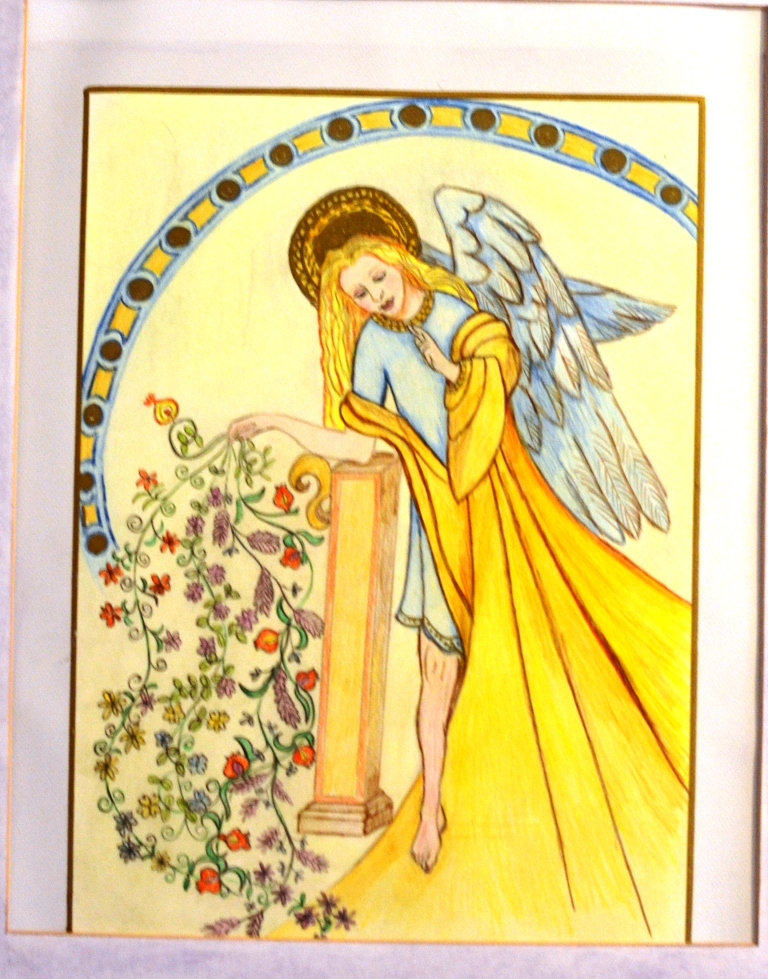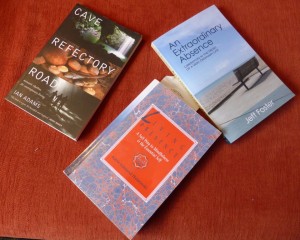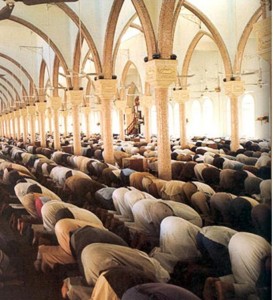Was the early Christian Church constructed on a fault-line?
The Meaning of Mary Magdalene by Cynthia Bourgeault.

- Mary Magdalene by
Cynthia Bourgeault
- A book which gives a good shake to the foundations of my Faith.
Throughout my life I have accepted without question the primacy of the texts in the Canon of Scripture as God’s words to us. Basically, my faith has been nourished by the synoptic gospels, Acts, Paul’s letters, some Psalms and a few Old Testament stories. As a Catholic, I am also immersed in Church tradition and teaching. This book by Cynthia Bourgeault has woken me up: new horizons indeed.
The “Master Story”
Cynthia Bourgeault suggests that Western Christianity missed the deep spiritual message of Jesus and installed as its principal theme a “Master Story”. This “Master Story” we all know through the Canon of Scripture: that Jesus’ death and resurrection redeemed us. This sacrifice of God’s son has bought us eternal life, saving us from our sins. The Eucharist is the central theme in which Jesus, physically resurrected and ascended to His Father, becomes present to us until He comes back to Earth. The Church is founded upon rock – Peter and his successors who are always men.
Another story: A Love story.
While not lacking rigorous research, this book emerges essentially from Cynthia Bourgeault’s own spiritual wisdom, a result of many years of prayer and reflection. It is based on a different set of rules from the biblical scholarship which I am used to but I find her main conclusions fit much better for me within my own spiritual journey than the “Master Story”. One of the difficulties I have with the way the Catholic Church has turned out is that throughout its history it has behaved disgracefully, from the top down, on many occasions. The sexual abuse scandals of recent years lay bare a profound imbalance within its psyche and not one that anyone will imagine is only of recent years. Another is that the basics of a sound relationship with God are hard to discern in its history: meekness, humility, poverty, trust in Providence, forgiveness, love and so on. These are all there in individuals but not in the Church, the Curia or the Vatican and if they are they have been very well disguised. I sense that Cynthia Bourgeault is right when she identifies the imbalance with a lack of the feminine within the Church’s hierarchical structures over the past 2000 years. It is not that this master story is wrong it is simply that, in becoming the only story, a story staunchly defended, interpreted and canonised by the Catholic Church over the centuries, this has weakened the foundations of the Church and stunted and deformed the shape of the message which Jesus has given to us. This is because it has marginalised a great love story. By God’s grace the Church is still carrying His message of His Love for us to people throughout the world. Perhaps mankind has not been ready to hear and absorb the full story until now.
What has been pushed to the margins is a love story, a love story in which we are all invited to partake. This love story is fully human and fully divine and belongs to the special relationship which existed between Jesus and Mary Magdalene.
Male/Female love as Divine Love.
Cynthia Bourgeault painstakingly shows how Mary Magdalene’s role as the first Apostle, sent by Jesus to give the news of his resurrection to Peter and his other chosen disciples, has been played down in favour of the master story. Jesus’ relationship with Mary Magdalene is found within the gospels but she was associated with a reputation as a prostitute from the first years of Christianity, a myth perpetuated throughout the centuries. So the chances of the Jesus/ Mary Magdalene relationship being seen as centrally important in “the new covenant”, if not indeed being the essence of the new covenant, has always been remote. She details just how the story has been side-lined and one way, in particular, was in the way in which the Canon of Scripture which omits the “Gnostic” texts, came to be adopted. Until reading this book, I had no interest in the non-canonical gospels. My interest was in the historical Jesus: facts. My male brain saw this as the only route to developing my relationship with Christ. Knowing Him more clearly would lead to loving Him more dearly, not the other way round. The fascinating analysis presented in this book has moved my perspective. Cynthia Bourgeault examines thoroughly how these non-canonical gospels throw light upon this great love story and the dynamics at the heart of Love in all its fullness, in all its power for transformation and in all its transcendental energy.
She also shows how the tradition of Mary Magdalene managed to endure in France and can still be discerned in certain communities. I have been surprised in my own spiritual journey by experiences which are totally new to me. These carry echoes from the rich tradition of contemplative mysticism in the history of the Church, often found in France and Spain: I can best describe them as encounters with divine love tagged on to traditional “images”, such as the communion of saints, the Sacred Heart and Therèse of Lisiuex. On reading this book, experiences of love which have pushed their way into my life as loose ends, uncharacteristic of my “master story” training, fall into place – (the communion of saints, the Sacred Heart and the Canticle of John of the Cross, as examples)
Kenosis – the key (What is Kenosis?)
Cynthia Bourgeault repeats often that whether Jesus had a sexual relationship with Mary Magdalene is not really relevant. The male/female relationship is full of sexual power whether consummated or not. The celibate life can be a full expression of a person’s sexuality, male or female as much as a any married person. The key is what happens to Eros, sexual love when it joins with Kenosis.
“Kenosis” is a Greek word used by Paul to describe the self-emptying of Jesus and posed many theological conundrums in the early Church.
Have this mind among yourselves, which is yours in Christ
Jesus, who, though he was in the form of God, did not count equality with God a thing to be grasped, but emptied himself, taking the form of a servant, being born in the likeness of men. And being found in human form he humbled himself and became obedient unto death, even death on a cross. Philippians 2: 5-8
The lives of many individuals who have followed Jesus in self-emptying show how we, too, can empty ourselves, being servants in Love. It is not only the Mother Theresas who show us how to imitate Christ in kenosis. In the field of alcohol self-help I have encountered many women who kept alive their love and their husband in a chaotic world while he would lapse and lapse again before, at last, accepting a life without alcohol. In plain terms we would say that such a life of patient accompaniment is very “draining”: that is kenosis. Such women always seemed to me to be full of Wisdom and their love became healing for many more than just their husbands. Many individuals live with someone who has a personality disorder and learn to accept, in love, a world which rarely resembles his/her own; others love and care for their down’s syndrome children, re-arranging their entire lives to do so. We do not know just when in life we might be called to let go of self, completely, setting aside self on a daily basis in loving union with the beloved. These examples are extremes of what is demanded in most relationships but partnerships don’t last long without learning to let-go, be humble, renounce desires and empty self in some way or other. “Kenosis” is doing this perfectly and in doing so becoming more truly just who you are. Marriage is the paradigm setting for Kenosis.
Cynthia Bourgeault suggests that Agape, God’s Love, this absolute love into which we are all called to share and in which to belong, enfolds us totally when Eros and Kenosis combine. This incarnated love is central to the meeting of God with man. The Church has shown in its teaching a profound imbalance, a fear, an excess of legislation and an ignorance of the goodness of intimacy with regard to sexuality and sexual love. Indeed, it seems to have separated sex from love on important occasions and if a detailed analysis of church literature does not bear this out, the commonly held perception that sex is more often an occasion of sin than an occasion of grace, is witness to what has been going on in the clerical mind for centuries. Celibacy does not guarantee access to divine love nor an understanding of human love. Both the celibate and the married state invite us to emptying of self. However in the Catholic Church, marriage has always been regarded as a second best – “if you must”, says Paul.
Mary Magdalene and Jesus
The book tells of how the author, in a single moment, became aware that the one person who was with Jesus at his death on the cross and the one at the tomb when He rose was Mary Magdalene. Here, she says, is a woman who stays with her beloved, physically at his tomb, holding his life in her heart until he rises from the tomb. Slowly, for me, it has sunk in that this role of Mary Magdalene is of the highest importance in the gospel story. Yet the love between Jesus and Mary Magdalene has been taught as a mere detail in the master story with the spotlight fixed on the forgiveness of the repentant prostitute rather than on the reciprocated love between these central characters. Cynthia Bourgeault’s intention is to restore Mary Magdalene to her legitimate and significant role in the story we tell of God’s love for us in Christ. She draws upon her understanding of “the Fifth Way” an idea by Mouravieff which I can’t say I understood. However, I like her conclusion, self evident when we understand the place and nature of this love in Jesus’ life, that Jesus learned as much about love from Mary Magdalene as she from him. Maybe we are now at a moment to accept such things.
The Bridal chamber
There are many important horizons opened up in “The Meaning of Mary Magdalene” such as the importance of anointing, the significance of the “Song of Songs” and the Magdalene tradition in France.
For me though, what I take from this stimulating work, in itself an exposition of the spirituality of romantic relationships, is that the “Master Story” has helped build an unbalanced Church, principally reflecting the male mind rather than representing a balance between the masculine and the feminine. (Even the prominence in Catholicism of devotion to Mary, Jesus’ mother, virgin and chaste can suggest a downgrading of the status of non-virgin women.) What is less told is a great love story, the greatest Love story; a love story which points the Way for us all to life in Christ. I am becoming aware of how conditioned I have been to find such re-adjustment of the Gospel story as unacceptable, theologically unsound and probably heretical. However, it does add balance.
At heart, we have been given no choice but to accept a story which is male-centred, presents the mechanics of salvation in place of its heart and continues the ancient male priesthood. It has claimed as its right absolute authority, the privilege to preside, decide and define the gospel story while, at the same time, over the past two thousand years, it has ruled, killed, persecuted and excluded as much as any other despot. We have received a vocabulary for our prayers of courtly obeisance, of a male God high above us, monarchical with an army of angels, of Christ as King, of ourselves as his soldiers. The images are male, the vocabulary masculine: mind over heart, logic trumps emotion and intuition.
The alternative story is a Wisdom story which Cynthia Bourgeault illuminates with convincing insights in which heaven and earth come together , male and female entwine, where unity and singleness are the seal. The prayers are love poems, words between bride and groom, man and wife, between lovers: God’s own Word. This is the Good News, The Way, the Truth, the Word and Life eternal. The nuptial chamber is where creator and created meet to transform both. This story needs no intellectual gymnastics, just an immersion in prayer of the heart and a willingness to let the words of the scriptures, even “Gnostic” writings, sink in in prayer, in lectio divina and quiet listening. It invites us, too, to enter in, to know God intimately. That can’t be bad.
While Christian mystics have often come under suspicion from the Church it may be as Karl Rahner suggested,
“In the days ahead, you will either be a mystic (one who has experienced God for real) or nothing at all.”
“The Meaning of Mary Magdalene” is, for me, an inspiring vision of just what “experiencing God for real” is all about.
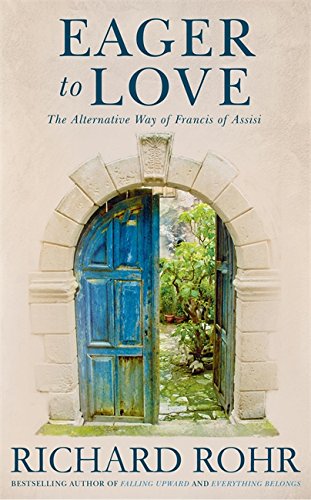







 Follow
Follow